1. Innovation Quotient Assessment
2. About
2.1. An NTUC social enterprise that provides quality and affordable health and eldercare services
2.2. 40 years of experience
2.3. A dedicated team of doctors, dentists, pharmacists & care professionals
2.4. Supports more than 300,000 people in Singapore every month
2.5. Focuses on providing services to elderly
3. Business Model Canvas
4. Journey Map of an Outpatient in NTUC Clinic
5. Typical patient
5.1. Persona
5.2. Empathy Map
6. Typical Doctor
6.1. Pesona
6.2. Empathy Map
7. Desired PCN process using Telemedicine
8. Areas of Service Innovation
8.1. Telemedicine
8.1.1. In-person consultations can be expensive
8.1.1.1. Virtual consultations are inexpensive and only require a smartphone to enable it
8.1.2. Elderly patients find it difficult to visit the clinic - disabilities etc.
8.1.2.1. Virtual doctor appointments will solve this
8.1.3. Elderly people have to wait in long queues at clinics
8.1.3.1. No more waiting in long queues as consultation can be done virtually
8.1.4. Hospitals are overcrowded
8.1.4.1. Less overcrowding due to real-time remote monitoring
8.1.4.2. More space in hospitals for critically-ill
8.1.4.3. Hospitals will be able to see more patients with faster response times
8.1.5. Emergency Help needed can be address
8.1.5.1. In case of some emergency initial and basic medication can be guided
8.1.5.2. While informing emergency case, doctors can view the state of the patient and can guide the people to follow steps
8.2. Internet of Things
8.2.1. Elderly patients find it difficult to personally visit clinic
8.2.1.1. Monitor their vitals at home using wearable devices
8.2.2. Visiting a doctor everytime to check health can be expensive
8.2.2.1. Wearable devices are inexpensive. People can take control of and monitor their own health
8.2.3. Hospitals are overcrowded
8.2.3.1. Less overcrowding due to real-time remote monitoring
8.2.3.2. More space in hospitals for critically-ill
8.2.3.3. Hospitals will be able to see more patients with faster response times
8.2.4. Desired PCN diagram using IoT
8.3. Possibility of using robotics to disperse medicines
8.3.1. Drones in Healthcare
8.4. Retail Pharmacy
8.5. Mobile App
8.5.1. Old People find it difficult to manage their medicines
8.5.1.1. Provide a Mobile app which reminds elderly to take medicines on time.
8.5.1.2. Makes medicines easily identifiable thus reducing the chances of taking wrong medicines
8.5.1.3. s
8.5.1.3.1. Unity does the work for elderly patients.
8.5.1.3.2. Patients get medicines at their home.
8.5.1.4. s
8.5.1.4.1. Big reminder showing the color of pouch from which patient takes out medicines and take,
9. Services
9.1. 1. Retail Pharmacy
9.1.1. 1. Provides affordable healthcare products
9.1.2. 2. 60 Unity pharmacies and drug stores
9.1.3. Link: http://ntuchealth.sg/retail-pharmacy/
9.2. 2. Dental Clinics
9.3. 3. Family Medicine Clinics
9.3.1. 1. One-stop healthcare services
9.3.2. 2. Comprises of qualified family physicians, nurses and allied healthcare professionals
9.3.3. Link: http://ntuchealth.sg/family-medicine-clinic/
9.3.4. Current PCN diagram
9.4. 4. Senior Day Care Centres
9.5. 5. Home Care Services
9.5.1. Provides care services in the convenience of a person’s home
9.5.2. Targeted at aged people who need to be taken care of in the day
9.5.3. Care associates assist in grocery shopping, recreational activities, preparing meals
9.6. 6. Nursing Homes
9.6.1. 1. Residential spaces that provide professional, person-centered & holistic care
9.6.2. 2. 24-hour medical and nursing care
9.6.3. Link: http://ntuchealth.sg/nursing-homes/
